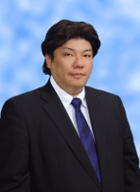Russia To Suspend Support of Domestic Auto Industry
The Russian auto market’s increased demand for new passenger cars has caused inventory shortages, and these shortages have caused Russian authorities to suspend State programs of industry support.
In May, for example, the number of the cars sold increased by 2.3 times, compared to same period in 2020. This growth is partly the result of pandemic restrictions last year. A total of 663,000 new cars have been delivered to the customers this year, up 39% from a year ago.
Another reason for the shortage of cars in Russia is a shortage of semiconductor chips.








